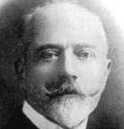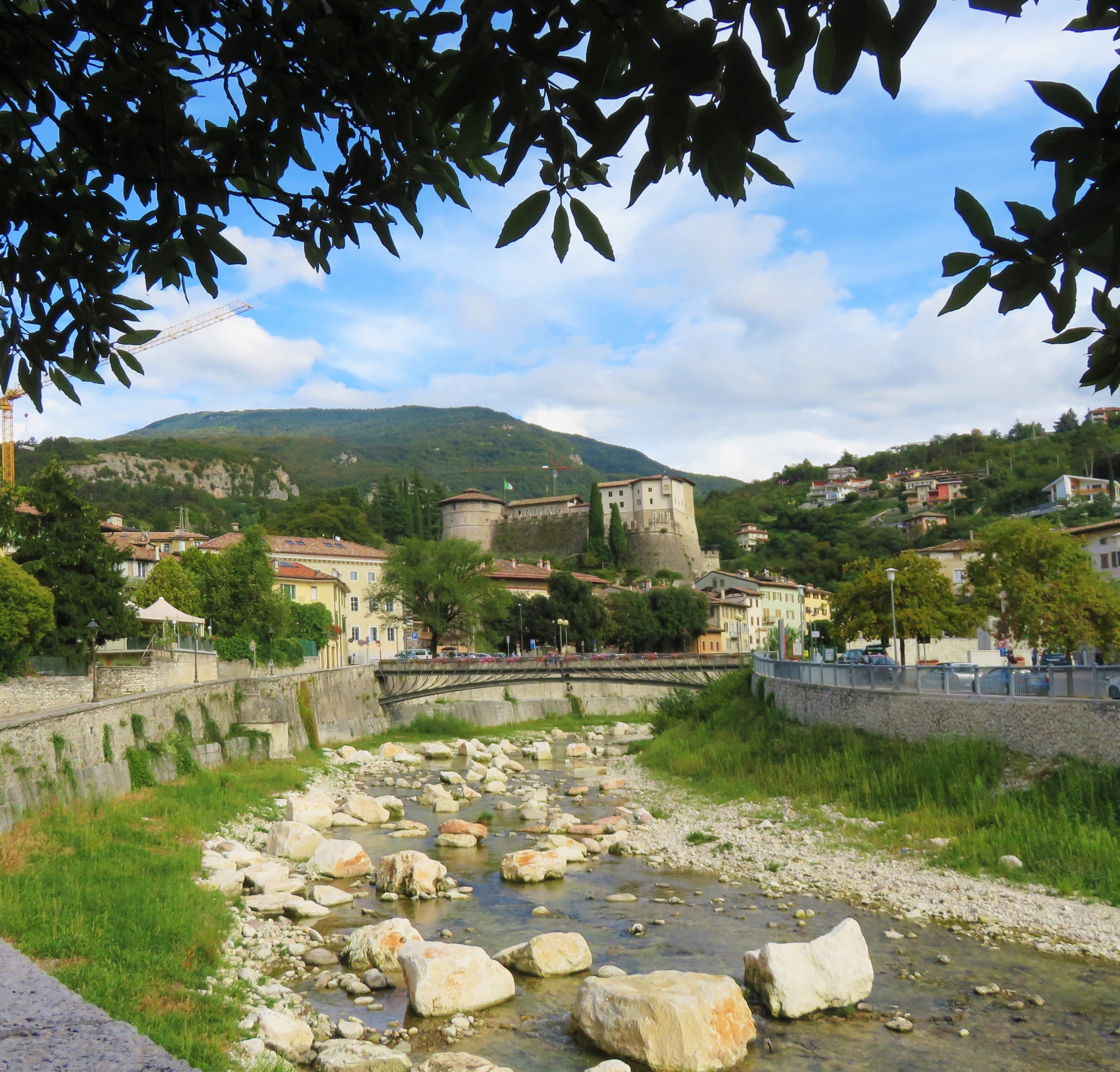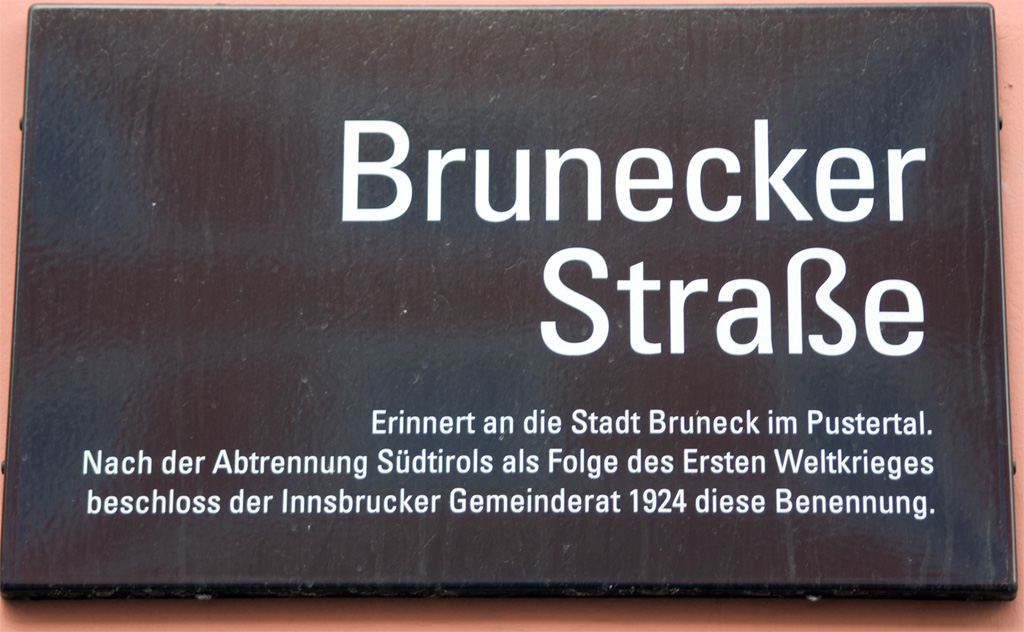|
Ettore Tolomei
Ettore Tolomei (16 August 1865, in Rovereto – 25 May 1952, in Rome) was an Italian nationalist and fascist. He was designated a Member of the Italian Senate in 1923, and ennobled as Conte della Vetta in 1937. Pre-World War I activism Born into a nationalistically oriented family (that rejected the Austrian domination of his Trentino and supported the Italian irredentism), after his studies in Florence and Rome Tolomei became associated with the nationalistic Dante Alighieri Society. After graduation in 1888 he taught in Italian schools at Tunis, Thessaloniki, İzmir and Cairo. He returned to Italy in 1901 and was appointed Inspector General of Italian Schools Abroad by the Foreign Ministry's Office. His nationalistic activities had begun in 1890 with the founding of the weekly magazine ''La Nazione Italiana'' (The Italian Nation), a propagandistic publication whose aim was to popularize the positions of the Dante Alighieri Society. Its articles dwelled mainly on the issue of T ... [...More Info...] [...Related Items...] OR: [Wikipedia] [Google] [Baidu] |
Rovereto
Rovereto (; "wood of sessile oaks"; locally: ''Roveredo'') is a city and ''comune'' in Trentino in northern Italy, located in the Vallagarina valley of the Adige River. History Rovereto was an ancient fortress town standing at the frontier between the bishopric of Trento – an independent state until 1797 – and the republic of Venice, and later between Austrian Tyrol and Italy. In the Middle Ages it was known by its German toponyms ''Rofreit'' and ''Rovereith''. This town started to be populated with inhabitants of the prehistory with traces that were found where today are the oldest ways which belong to the actual main historical centre, around via della Terra. The town has a complexity of plans which are printed in various developments, as if it could have different directions to evolve an ideal, brought towards its completeness in the 15th century, from the model of Siena – the leaf of the crown and the classic Athens reference of the foxil Nautilus. Some of the trace ... [...More Info...] [...Related Items...] OR: [Wikipedia] [Google] [Baidu] |
Alps
The Alps () ; german: Alpen ; it, Alpi ; rm, Alps ; sl, Alpe . are the highest and most extensive mountain range system that lies entirely in Europe, stretching approximately across seven Alpine countries (from west to east): France, Switzerland, Italy, Liechtenstein, Austria, Germany, and Slovenia. The Alpine arch generally extends from Nice on the western Mediterranean to Trieste on the Adriatic and Vienna at the beginning of the Pannonian Basin. The mountains were formed over tens of millions of years as the African and Eurasian tectonic plates collided. Extreme shortening caused by the event resulted in marine sedimentary rocks rising by thrusting and folding into high mountain peaks such as Mont Blanc and the Matterhorn. Mont Blanc spans the French–Italian border, and at is the highest mountain in the Alps. The Alpine region area contains 128 peaks higher than . The altitude and size of the range affect the climate in Europe; in the mountains, precipitation ... [...More Info...] [...Related Items...] OR: [Wikipedia] [Google] [Baidu] |
Prontuario Dei Nomi Locali Dell'Alto Adige
The Prontuario dei nomi locali dell'Alto Adige (Italian for ''Reference Work of Place Names of Alto Adige'') is a list of Italianized toponyms for mostly German place names in South Tyrol (''Alto Adige'' in Italian) which was published in 1916 by the Royal Italian Geographic Society (''Reale Società Geografica Italiana''). The list was called the Prontuario in short and later formed an important part of the Italianization campaign initiated by the fascist regime, as it became the basis for the official place and district names in the Italian-annexed southern part of the County of Tyrol. It has often been criticized by the German-speaking population of the province, on the grounds that the new names often have little perceived historical relevance. However, important academics like Giovan Battista Pellegrini or Johannes Kramer have positively judged the work of Tolomei, considering it as founded on valid criteria. Development In the 1890s Ettore Tolomei founded a nationalist mag ... [...More Info...] [...Related Items...] OR: [Wikipedia] [Google] [Baidu] |
Woodrow Wilson
Thomas Woodrow Wilson (December 28, 1856February 3, 1924) was an American politician and academic who served as the 28th president of the United States from 1913 to 1921. A member of the Democratic Party, Wilson served as the president of Princeton University and as the governor of New Jersey before winning the 1912 presidential election. As president, Wilson changed the nation's economic policies and led the United States into World War I in 1917. He was the leading architect of the League of Nations, and his progressive stance on foreign policy came to be known as Wilsonianism. Wilson grew up in the American South, mainly in Augusta, Georgia, during the Civil War and Reconstruction. After earning a Ph.D. in political science from Johns Hopkins University, Wilson taught at various colleges before becoming the president of Princeton University and a spokesman for progressivism in higher education. As governor of New Jersey from 1911 to 1913, Wilson broke with party bosse ... [...More Info...] [...Related Items...] OR: [Wikipedia] [Google] [Baidu] |
Austrian Alpine Club
The Austrian Alpine Club (german: Österreichischer Alpenverein) has about 573,000 members in 196 sections and is the largest mountaineering organisation in Austria. It is responsible for the upkeep of over 234 alpine huts in Austria and neighbouring countries. It also maintains over 26,000 kilometres of footpaths, and produces detailed maps of key mountain areas within Austria. Much of this work is done by the association's 22,000 volunteers. The association has a museum in Innsbruck dedicated to the history of alpinism. It also has sections in Belgium and the United Kingdom, and a group in Poland. See also * South Tyrol Alpine Club (Alpenverein Südtirol, AVS) * German Alpine Club The German Alpine Club (german: links=no, Deutscher Alpenverein, DAV for short) is the world's largest climbing association and the eighth-largest sporting association in Germany. It is a member of the German Olympic Sports Confederation and the ... (Deutscher Alpenverein, DAV) References E ... [...More Info...] [...Related Items...] OR: [Wikipedia] [Google] [Baidu] |
Westliches Zwillingsköpfl
The Westliches Zwillingsköpfl (also ''Westlicher Zwillingskopf'', Italian ''Testa Gemella Occidentale'', all of them literally meaning "Western Twin Head"), is a mountain peak on the border of Italy and Austria. The Westliches Zwillingsköpfl is the northernmost point of Italy, even though the nearby Glockenkarkopf (Italian ''Vetta d'Italia'') is often considered to hold this distinction. The first known ascent of the Westliches Zwillingsköpfl was made on 9 July 1895 by Franz Hofer and Fritz Koegl, who published an account of their tour in the journal of the Österreichischer Alpenverein in 1897.Fritz Koegel: ''Die Reichenspitzgruppe''. In: ''Zeitschrift des Deutschen und Österreichischen Alpenvereins'' 28 (1897), p. 188–228online/ref> Location The Westliches Zwillingsköpfl is located on the main ridge of the Zillertal Alps. To the north the slopes fall into the ''Krimmler Achental'' in the Austrian state Salzburg, to the south into the ''Ahrn Valley'' around the territor ... [...More Info...] [...Related Items...] OR: [Wikipedia] [Google] [Baidu] |
Drainage Basin
A drainage basin is an area of land where all flowing surface water converges to a single point, such as a river mouth, or flows into another body of water, such as a lake or ocean. A basin is separated from adjacent basins by a perimeter, the '' drainage divide'', made up of a succession of elevated features, such as ridges and hills. A basin may consist of smaller basins that merge at river confluences, forming a hierarchical pattern. Other terms for a drainage basin are catchment area, catchment basin, drainage area, river basin, water basin, and impluvium. In North America, they are commonly called a watershed, though in other English-speaking places, "watershed" is used only in its original sense, that of a drainage divide. In a closed drainage basin, or endorheic basin, the water converges to a single point inside the basin, known as a sink, which may be a permanent lake, a dry lake, or a point where surface water is lost underground. Drainage basins are similar ... [...More Info...] [...Related Items...] OR: [Wikipedia] [Google] [Baidu] |
Glockenkarkopf
The Glockenkarkopf (also known as ''Klockerkarkopf'', Italian ''Vetta d'Italia'') is a mountain of in the Zillertal Alps on the border between the Austrian state Salzburg and the Italian province of South Tyrol. Location The ridgeline of Glockenkarkopf forms the international border extending between two mountain passes, Krimmler Tauern in the west and Birnlücke (Forcella del Picco) in the east. Nearby summits include the slightly higher Pfaffenschneidkopf (2918 m) to the southwest, and the Westliches Zwillingsköpfl (2835 m) to the northeast. History The first known ascent of the Glockenkarkopf was made on 10 July 1895 by Franz Hofer and Fritz Koegl, who published an account of their tour in the journal of the Österreichischer Alpenverein in 1897., page 318Fritz Koegel: ''Die Reichenspitzgruppe''. In: ''Zeitschrift des Deutschen und Österreichischen Alpenvereins'' 28 (1897), p. 188–228online/ref> The summit, despite being part of Austria-Hungary at that time ... [...More Info...] [...Related Items...] OR: [Wikipedia] [Google] [Baidu] |
Adige
The Adige (; german: Etsch ; vec, Àdexe ; rm, Adisch ; lld, Adesc; la, Athesis; grc, Ἄθεσις, Áthesis, or , ''Átagis'') is the second-longest river in Italy, after the Po. It rises near the Reschen Pass in the Vinschgau in the province of South Tyrol, near the Italian border with Austria and Switzerland, and flows through most of northeastern Italy to the Adriatic Sea. The river's name is Celtic in origin, from the Proto-Celtic cel-x-proto, *yt-ese, label=none, "the water", cognate with the River Tees in England (anciently ''Athesis'', ''Teesa''). Description The river source is near the Reschen Pass () close to the borders with Austria and Switzerland above the Inn valley. It flows through the artificial alpine Lake Reschen. The lake is known for the church tower that marks the site of the former village of Alt Graun ("Old Graun"); it was evacuated and flooded in 1953 after the dam was finished. Near Glurns, the Rom river joins from the Swiss Val Müstair. ... [...More Info...] [...Related Items...] OR: [Wikipedia] [Google] [Baidu] |
Province Of Belluno
The Province of Belluno ( it, Provincia di Belluno; de-AT, Provinz Belluno; lld, Provinzia de Belum) is a province in the Veneto region of Italy. Its capital is the city of Belluno. It has an area of and a total population of about 205,000. Geography Situated in the Alps, the province of Belluno consists almost entirely of mountainous terrain. It encompasses the natural and historical regions of Cadore, Feltrino, Alpago, Val di Zoldo, Agordino, Comelico and Ampezzano. The eastern part of the province is home to the Dolomites, including Tofane, Marmolada, Tre Cime di Lavaredo, and Antelao. For much of its course, the river Piave, runs through Belluno, as do its affluents the Boite and the Cordevole. The southern part is called Valbelluna, the widest and most populous valley of the province, which is bordered by the Venetian Prealps. The National Park of Belluno Dolomites is located in the province. Climate The province of Belluno's climate is among the most severe in ... [...More Info...] [...Related Items...] OR: [Wikipedia] [Google] [Baidu] |
South Tyrol
it, Provincia Autonoma di Bolzano – Alto Adige lld, Provinzia Autonoma de Balsan/Bulsan – Südtirol , settlement_type = Autonomous province , image_skyline = , image_alt = , image_caption = , image_flag = Flag_of_South_Tyrol.svg , flag_alt = , image_shield = Suedtirol CoA.svg , shield_size = x100px , shield_alt = Coat of arms of Tyrol , anthem = , image_map = Bolzano in Italy.svg , map_alt = , map_caption = Map highlighting the location of the province of South Tyrol in Italy (in red) , coordinates = , coordinates_footnotes = , subdivision_type = Country , subdivision_name = Italy , subdivision_type1 = R ... [...More Info...] [...Related Items...] OR: [Wikipedia] [Google] [Baidu] |
Rhaeto-Romance Languages
Rhaeto-Romance, Rheto-Romance, or Rhaetian, is a purported subfamily of the Romance languages that is spoken in south-eastern Switzerland and north-eastern Italy. The name "Rhaeto-Romance" refers to the former Roman province of Raetia. The question of whether these languages actually form a subfamily is called the Questione Ladina. The Italian linguist Graziadio Ascoli, writing in 1873, found them to share a number of intricacies and believed they formed a linguistic group. What distinguishes the Rhaeto-Romance languages from Italian are their phonemic vowel length (long stressed vowels), consonant formation, and a central rounded vowel series. If the subfamily is genuine, three languages would belong to it: Romansh in Switzerland, and Ladin and Friulian in Italy. Their combined number of speakers is about 660,000; the large majority of these (about 500,000) speak Friulian. Origin Before the Roman conquest, the Alps were Celtic-speaking in the north and Rhaetian-speaking i ... [...More Info...] [...Related Items...] OR: [Wikipedia] [Google] [Baidu] |






.jpg)

